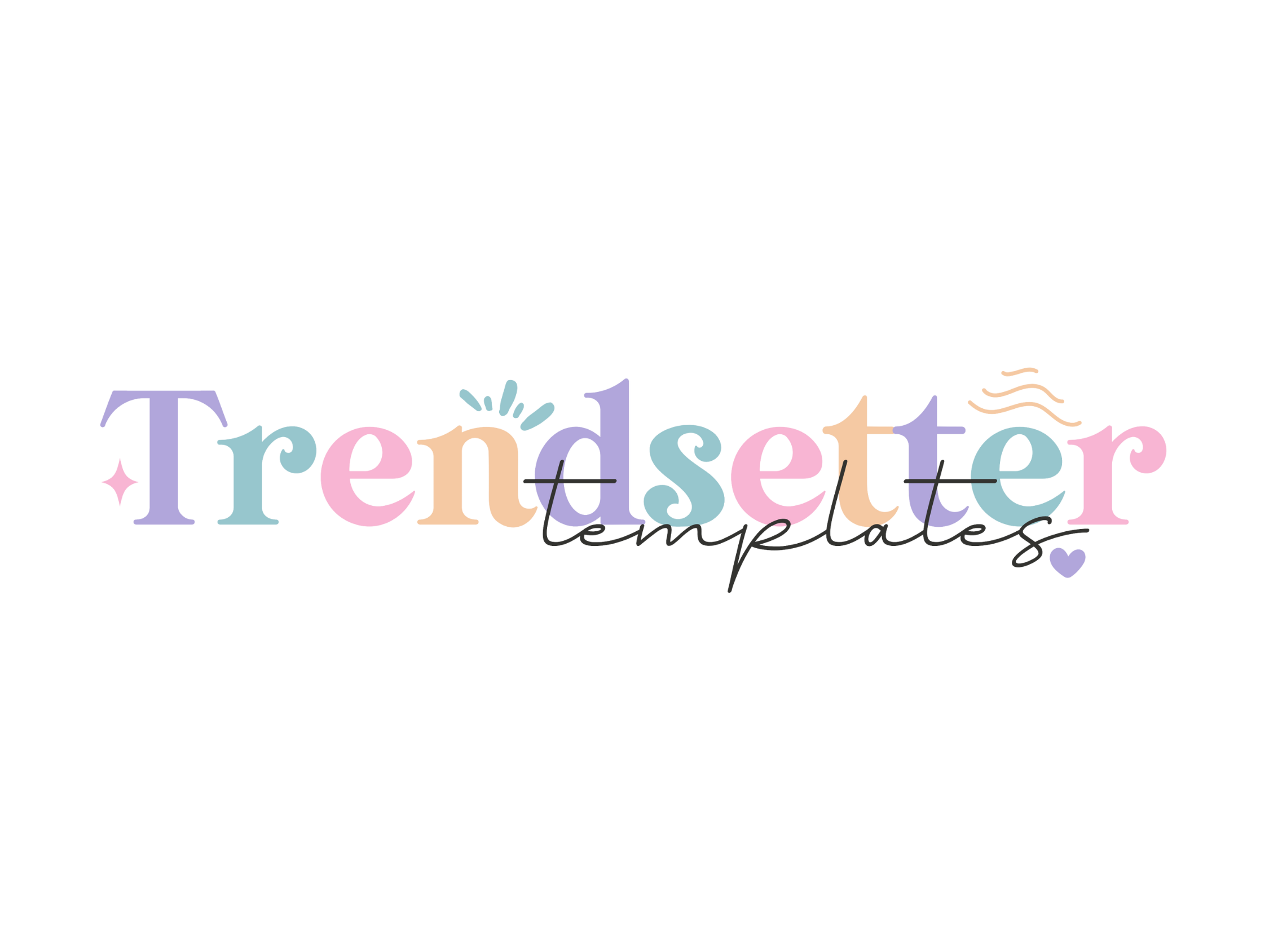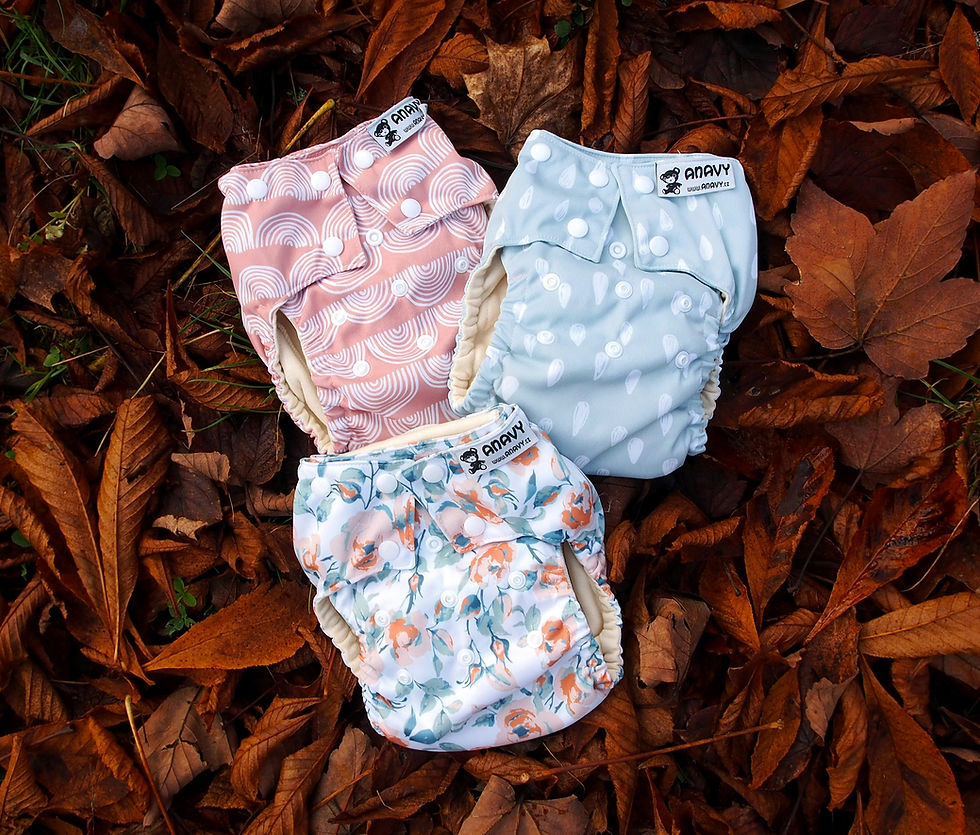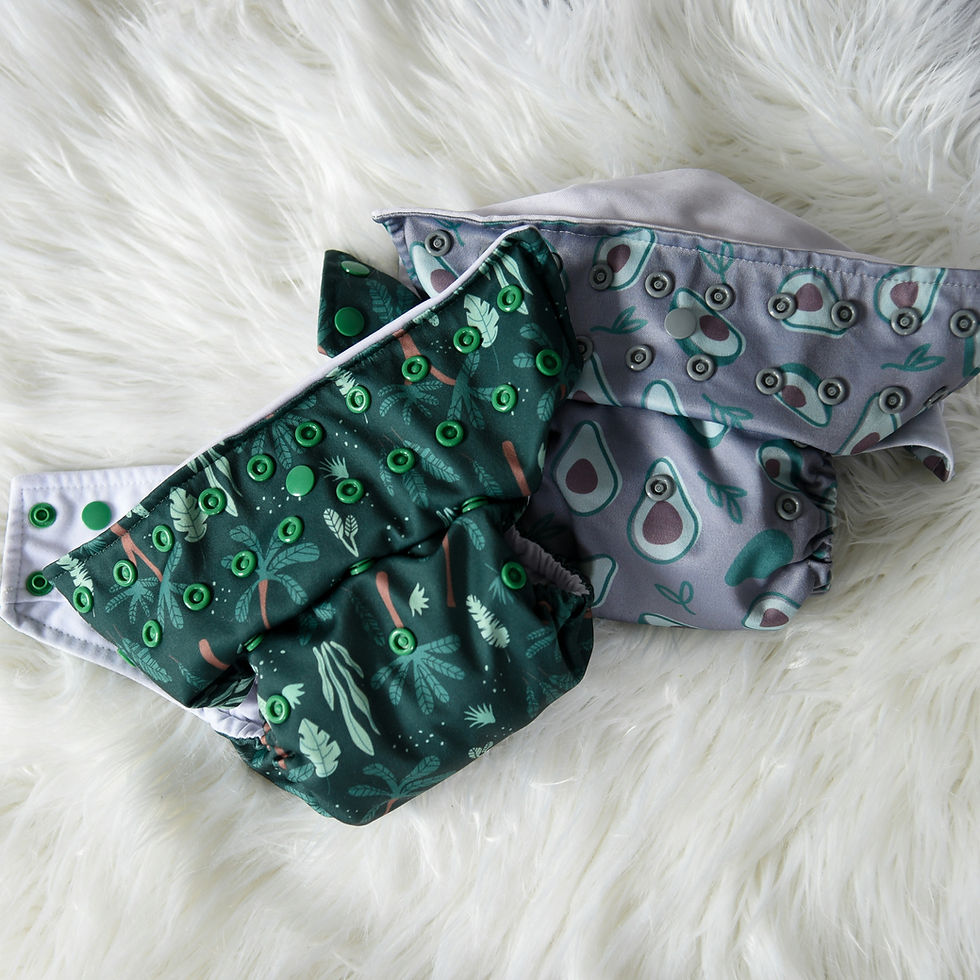Unlocking the Magic of Cloth Diapering 101 Your Ultimate Guide to Eco-Friendly Baby Care
- Everyoul Design

- Jul 3
- 4 min read
Cloth diapering is not just a nostalgic trend; it’s a practical choice for modern parents! In a world dominated by disposables, many families are rediscovering the joys of cloth diapers as a sustainable and wallet-friendly alternative. With rising environmental awareness, transitioning to cloth diapers can lead to great savings and a healthier choice for your baby. If you're exploring the option or seeking more insights, this guide will take you through everything you need to know!
What Are Cloth Diapers?
Cloth diapers are reusable diapers made from materials like cotton, bamboo, or microfiber. They come in various styles, designed to fit every family's lifestyle. While disposable diapers can take up to 500 years to decompose in landfills, cloth diapers can be washed and reused countless times, helping to protect our environment.
Additionally, many cloth diapers are free from the harsh chemicals found in disposable options. For example, studies show that babies wearing cloth diapers experience diaper rash less frequently, leading to a healthier skin environment.
Benefits of Cloth Diapering
Switching to cloth diapers offers several compelling advantages:
1. Environmentally Friendly
Disposable diapers account for nearly 20 billion diapers per year in the U.S. alone, contributing significantly to landfill waste. Opting for cloth diapers helps mitigate this issue. By making this choice, you are not only reducing waste but also helping to preserve natural resources, such as water and energy used in diaper production.
2. Cost Efficient
The initial cost for a cloth diaper stash is usually between $500 to $1,000. In contrast, a family could spend around $2,000 to $3,000 on disposables for just one child. After the initial investment, the savings multiply, especially if you reuse the diapers for subsequent children. For example, if you have two children in cloth diapers, the total cost per child could drop to as low as $250!
3. Healthier for Baby's Skin
Cloth diapers are often crafted from natural materials and are free from synthetic additives. This can lead to fewer instances of diaper rash, as many parents report noticing a reduction in skin irritations when their babies wear cloth versus disposable diapers.
4. Stylish Choices
Today's cloth diapers are available in an array of fashionable colors and designs. Imagine bright patterns with cute animals or classic solids that complement your nursery décor. You can mix and match to create a personalized look for your little one!
5. Easy to Use
Modern cloth diapers are user-friendly and often include features like snaps and Velcro for easy adjustments. Many also have built-in absorbent layers, which can help make the switch smoother for new parents.
Types of Cloth Diapers
To find the best fit for you and your baby, here is a breakdown of popular cloth diaper styles:
1. All-in-One Diapers (AIO)
AIO diapers are convenient because they include both absorbent layers and a waterproof shell in a single product. They are straightforward to use, making them a favorite among many new parents.
2. Pocket Diapers
These feature a pocket where you can customize absorbent material. You can easily adjust the diaper’s absorbency as your baby grows or as needed throughout the day.
3. Prefold Diapers
These are versatile and cost-effective. Prefolds are rectangular cloths that require folding and securing with a separate diaper cover. They are often praised for their high absorbency.
4. Fitted Diapers
Fitted diapers offer a snug fit and great absorbency. They do require a waterproof cover, but many parents appreciate their leak-proof qualities.
5. Hybrid Diapers
Hybrids provide flexibility with the option to use either a disposable insert or a reusable one. This makes them particularly convenient for outings or travel.
The Cloth Diapering Routine
Having a reliable routine is essential for successful cloth diapering:
1. Prepare Your Diapers
Start by washing new cloth diapers several times as recommended by the manufacturer. This helps enhance their absorbency.
2. Change Regularly
Aim to change cloth diapers every 2-3 hours. Frequent changes help keep your baby comfortable and decrease the risk of contamination.
3. Store Dirty Diapers Properly
Use a ventilated diaper pail or a wet bag for soiled items. This helps manage odors and keeps your space tidy.
4. Wash Your Diapers
For effective cleaning, use a two-step washing process: a cold rinse followed by a hot wash. Always adhere to specific washing instructions provided by the manufacturer.
5. Dry Them Correctly
Diapers can be air-dried or tumble-dried on low heat. Avoid fabric softeners, as they can reduce absorbency over time.
Tips for Success
Invest in Quality: Select high-quality cloth diapers to ensure durability and absorbency.
Stay Organized: Create a designated changing area stocked with all necessary supplies—this fosters efficiency during diaper changes.
Pair with a Good Liniment: Use creams that are safe for cloth diapers, as some products can damage absorbent materials.
Engage Caregivers: Share your cloth diapering routine with anyone who cares for your baby to ensure consistency.
Overcoming Challenges
Cloth diapering may come with some hurdles, such as leaks or odors. Adjust the fit of the diaper if leaks occur, or consider trying different types of inserts for better absorbency. Regular adjustments to your washing routine can also alleviate potential odor issues.
With a little time and practice, mastering cloth diapering can enhance your parenting experience and reduce your family's environmental impact.
Embracing Cloth Diapering
Cloth diapering is a wonderful method of caring for your baby while also supporting the environment. With a variety of stylish options available along with tangible benefits, it is a decision powered by love—both for your child and the planet.
Armed with this guide, you're ready to step into the colorful, sustainable world of cloth diapers and experience all it has to offer! Your baby and the Earth will be grateful.











Comments